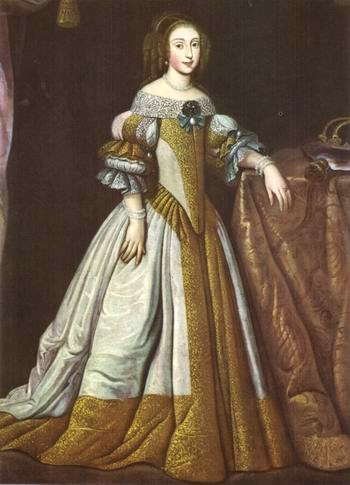A woman loved by both the people and her husband, she had a strong political influence over her husband the King, until the day he realised that her family, the Habsburgs, would not give him assistance in waging a war against Sweden.
Cecilia Renata was born on the 16th of July, 1611 in Graz as the 6th child and third daughter (although the firstborn daughter, Christine, died as an infant) to Ferdinand II, Holy Roman Emperor and his wife Maria Anna of Bavaria.
Her father sent a proposal of marriage between her and the Polish king, Wladyslaw IV, which arrived in Warsaw sometime in the spring, 1636. The dowry of the archduchess was to be 100, 000 zloty, and also that the emperor would pay the dowry for the king’s father’s two wives. Additionally the son of Wladislaw and Cecilia Renata was to obtain duchy of Opole and Racibórz in Silesia. However before everything was confirmed and signed, Ferdinand II died, and Cecilia’s brother, Ferdinand III, backed away from giving the Silesian duchy to the son of Wladislaw. Finally, on the 9th of August she was married in Vienna by proxy, and then in Warsaw by person on September 13, 1637 at the age of 26. She was crowned on the same day at St. John’s Cathedral in Warsaw which angered the nobility of Poland as Krakow was the city of coronations.
Cecilia proved to be a clever and energetic woman, and she really liked it at the Polish court where she was very popular among the nobles. One woman wrote in her memoirs that the new queen was a very polite woman, and that she would ask other women to sit with her even though she was queen. She became good friends with her sister-in law, Anna Catherine, who would go on to marry Phillip William, Elector Palatine. Cecilia also stayed in touch with her brothers whom she shared a loving relationship to.
There was one thorn in her side at the Polish court, however, and that was her husband’s mistress, Hedwig Luszkowska. Since the king would not remove her, she had to find a clever way to do it, and what better than to marry her off? So the mistress was out of the way, and on the 1st of April 1640 she gave birth to her first child and heir, Sigismund Casimir. Unfortunately he died only two years after his mother, aged only seven. When he was two years old however, Cecilia gave birth to a girl on the 8th of January, Maria Anna Isabella. But also this child would not reach adulthood, and died only a year later, giving Cecilia and Wladyslaw no living heirs.
Cecilia was politically active, and advocated a Habsburg and pro-Catholic point of view and allied herself with the pro-Habsburg faction of Chancellor Jerzy Ossoliński and pro-Catholic Albrycht Stanislaw Radziwill. She had much to say about the royal nominations for important official positions, and her influence over her husband was so strong that his childhood friend, Adam Kazanowski, no longer exerted any political influence over the king. This changed however when the king realised that he would get no assistance from her brother, and so her power waned and he started to disregard her advices.
Cecilia Renata died on the 24th of March 1644 in Vilnius (she was Grand Duchess of Lithuania after all) at the age of 32. The cause of death is stated to have been an infection. She was mourned by Waldyslaw, and also left a good impression on the public. She is buried at Wawel Cathedral in Krakow besides her husband. I have actually been inside this church and seen her tomb.

What a fascinating woman. I like how she ridded herself of the mistress. But how sad that she lost two children. I can't imagine how painful that would be. Women certainly had to endure, didn't they.
SvarSlettIndeed they had! I cannot even imagine how it is to lose one's babies, how painful it must be.
SvarSlett